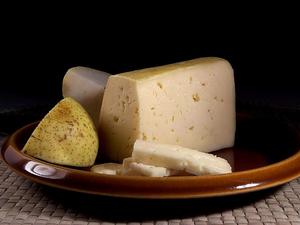Certain types of milks and cheeses are fattening and not particularly good for you, but dairy as a whole is a beneficial food group that’s important for your overall health.
If you’re confused about the amount of dairy you should consume, these helpful tips from the USDA will help you become a food pyramid pro:
Not all milk products are considered dairy foods.
While foods made from milk that retain their calcium content are a part of the dairy food group, foods like cream cheese, cream and butter are not. That's because these foods contain little to no calcium and, in turn, virtually no health benefits.
As you age, you need about the same amount of dairy.
A very young child needs only about 2 to 2 1/2 cups of foods from the dairy group per day, while all other children, teens and adults need approximately 3 cups.
Dairy products have a number of health benefits.
Regularly consuming dairy products improves bone health, prevents osteoporosis, builds bone mass in children, and even reduces the risk of cardiovascular diseases, type 2 diabetes and high blood pressure.
Only low-fat and fat-free dairy products are considered beneficial.
Dairy products with high saturated fat content and cholesterol can raise the “bad” cholesterol levels in your body and put you at risk for heart disease.
What Foods Are Included in the Dairy Group? [USDA]

 Equal Housing Opportunity
Equal Housing Opportunity